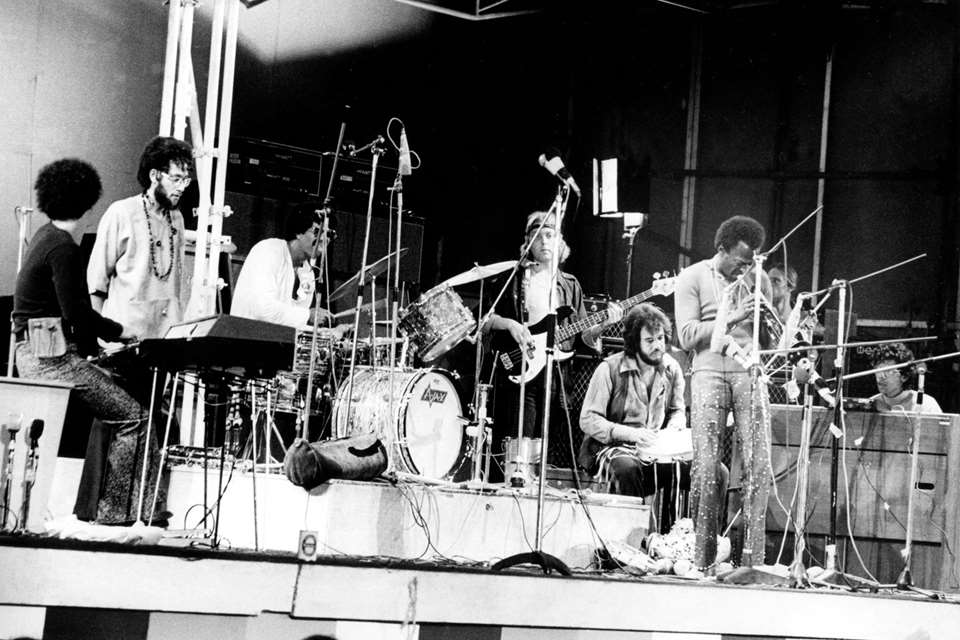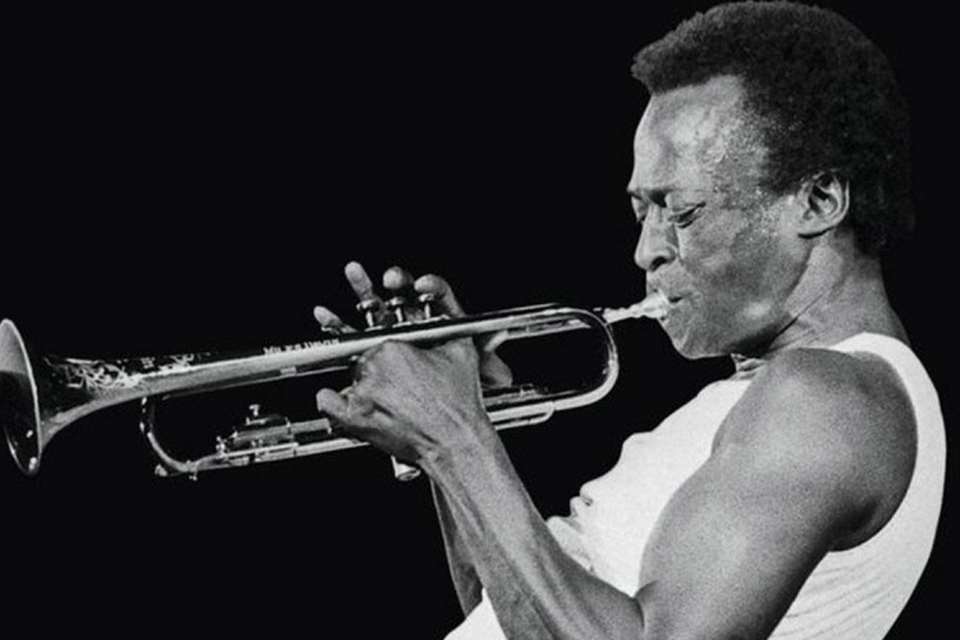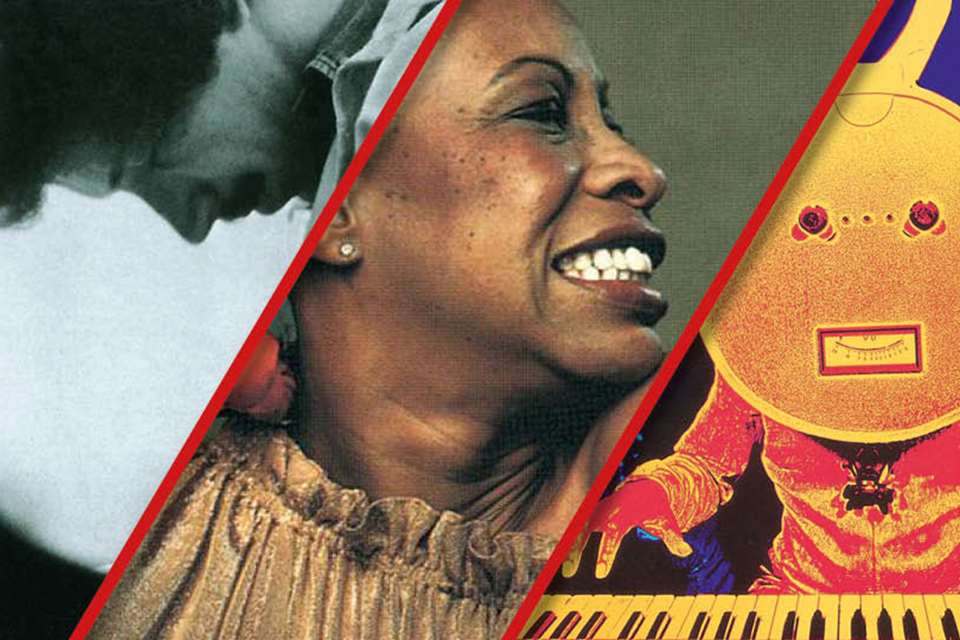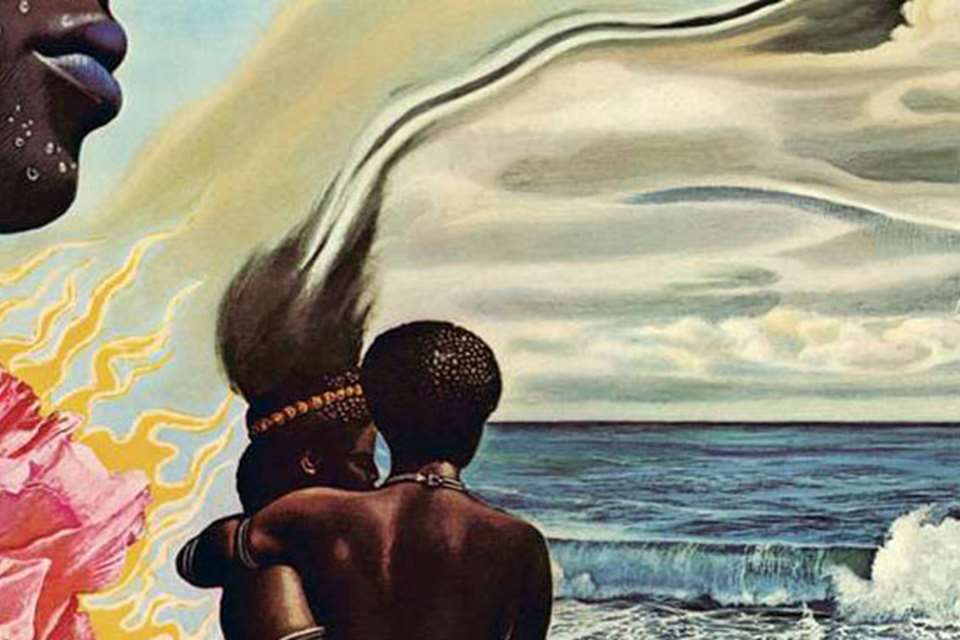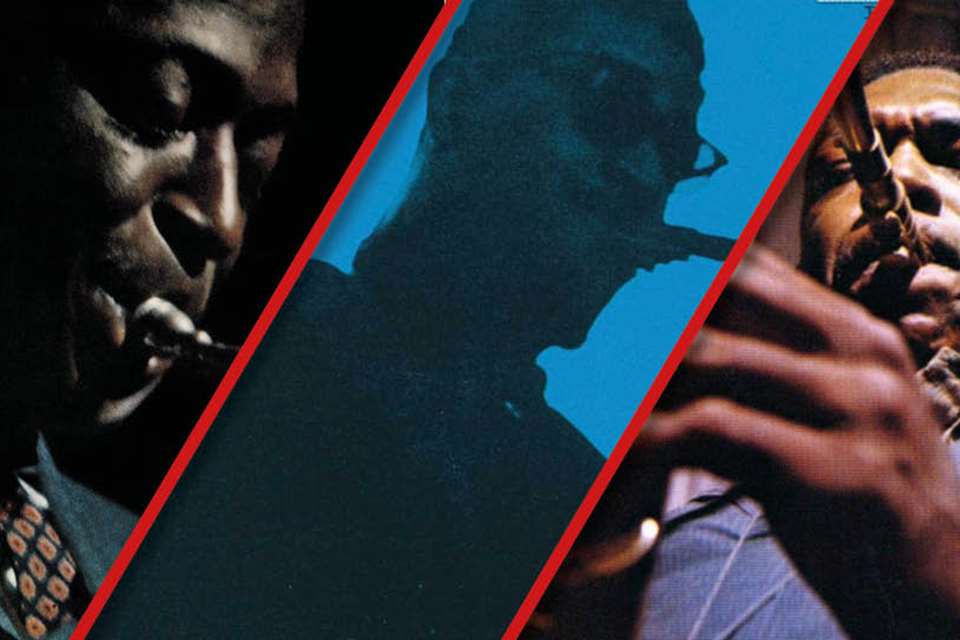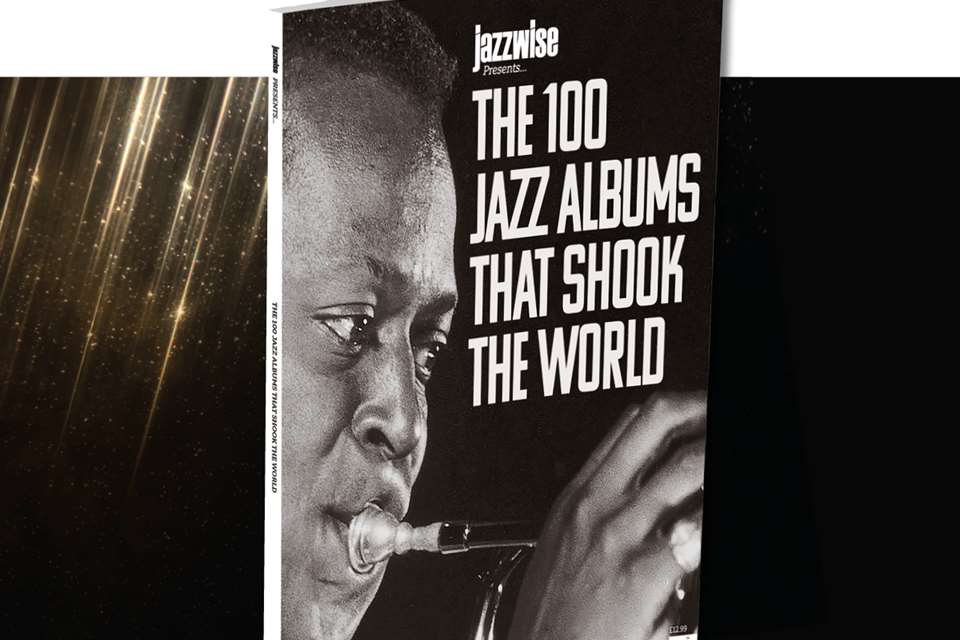Miles Davis – The Lost Quintet
Thursday, October 14, 2021
From the first electrifying notes of Miles Davis’ trumpet, hooked to the sheer ferocity of Jack DeJohnette’s drums, it’s clear that Live in Europe 1969 is an album of truly monumental music making – the like of which is rarely heard today

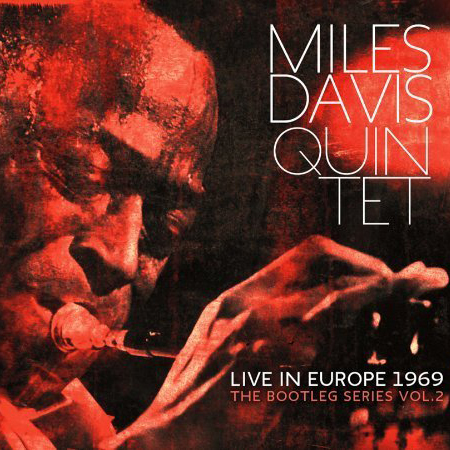 For as long as anyone can remember, the music business has floated on a cushion of hyperbole which has rendered terms like ‘astonishing,’ ‘amazing’ or ‘brilliant’ meaningless. It’s a shame, because once in a while an album comes along such as Miles Davis Quintet: Live in Europe 1969: The Bootleg Series Vol. 2 that knocks you sideways. Then you have to reach for such superlatives. But does ‘astonishing’, ‘amazing’ and ‘brilliant’ really do justice to a major four-disc release like this? One of such significance the history of jazz in the 1960s will have to be re-written? Even in his autobiography Davis was in no doubt about the importance of his Class of 1969: “Man, I wish this band had been recorded live because it was a really bad motherfucker… Columbia missed out on the whole fucking thing.”
For as long as anyone can remember, the music business has floated on a cushion of hyperbole which has rendered terms like ‘astonishing,’ ‘amazing’ or ‘brilliant’ meaningless. It’s a shame, because once in a while an album comes along such as Miles Davis Quintet: Live in Europe 1969: The Bootleg Series Vol. 2 that knocks you sideways. Then you have to reach for such superlatives. But does ‘astonishing’, ‘amazing’ and ‘brilliant’ really do justice to a major four-disc release like this? One of such significance the history of jazz in the 1960s will have to be re-written? Even in his autobiography Davis was in no doubt about the importance of his Class of 1969: “Man, I wish this band had been recorded live because it was a really bad motherfucker… Columbia missed out on the whole fucking thing.”
Well, Columbia may have missed out back then, but they’re making-up for lost time in the here and now. Live in Europe 1969 comprises rare broadcast material recorded by European TV and radio stations and is among some of the most remarkable music made in the twentieth century. 1969 was the year when the Woodstock generation came of age. Musical change was in the air, and Miles Davis was the poster-boy of those dramatic changes occurring in jazz. When his in-demand group finished their set at the Garden State Jazz Festival in New Jersey in November 1969, Downbeat magazine reported: “During the second minute of the tumultuous ovation, the young lady seated behind me was still gasping, ‘Oh God, oh God, oh God.’ Her reaction was understandable. She had just witnessed contemporary jazz at its peak of perfection.”
Fifty years later, those judgements, from fan and critic alike, still hold good – and some. Yet extraordinary though it may seem, the 1969 quintet – the immediate successor of Davis’ renowned Shorter-Hancock-Carter-Williams group featured on Live in Europe ’67: The Bootleg Series Vol. 1 – fell into what can only be described as a black hole as far as jazz history is concerned. As Peter Keepnews noted in a prescient feature for the Village Voice back in 1986: “One of the most serious problems confronted by jazz historians is that while recordings offer the only tangible evidence we have of the music’s development, some of the important stages in that development were insufficiently recorded… Miles spent a lot of time in the studio in 1969, and he came up with In a Silent Way and Bitches Brew... but [he] also spent a lot of time on the road that year, and music he made with his working band was even more extraordinary than the music on those two remarkable albums.”
Keepnews called Davis’s ensemble ‘The Last Quintet’, because, he said, “It was the last band Miles ever had that adhered to the standard instrumentation of trumpet, saxophone, piano, bass and drums.” Significantly, he added, “it might also be [called] the Lost Quintet, because for some reason it was never recorded.” The name stuck and ever after this band became known as The Lost Quintet.
Comprising Davis on trumpet, Wayne Shorter on soprano and tenor saxophones; Chick Corea on Fender Rhodes piano; Dave Holland on bass and Jack DeJohnette on drums, they did record for Columbia, but jazz history was never going to be re-written on the strength of the 27 November, 1968 session that produced ‘Directions I’ and ‘Directions II’, released on the retrospective compilation double album Directions in 1981 when the quintet was augmented by Joe Zawinul and Herbie Hancock on electric pianos, or their 19 August, 1969 session, when it was augmented by Zawinul, John McLaughlin on guitar and Jumma Santos on percussion that produced ‘Sanctuary’, released as a part of the Bitches Brew double LP set in 1970.
These three tracks, plus a couple of bootleg albums of varying quality, was not the kind of evidence that suggested a major wrong was in need of righting. But now, with the in-depth examination of the Lost Quintet made possible by the release of Live in Europe 1969, we have the evidence that suggests this band was one of Davis’ greatest ensembles.
What Live in Europe 1969 gives us is a remarkable snapshot in time, showing Davis as the public conscience of his art by escaping the limits jazz had imposed on itself. It’s a simultaneous response to free jazz, rock music and Davis’ own musical past, plus a bit of good old fashioned futurism that gives us a glimpse of what could have been but never quite was. This is coruscating, exciting, magnificent jazz and it’s tempting to say Davis never played better than he does on these discs – certainly he never played with such technical assurance, range and invention plus a muscularity and aggressiveness that will come as a surprise to many. As drummer Jack DeJohnette recalled: “It was a great period, a really high point of creativity for Miles in that period. He wasn’t doing any drugs. He was straight into macrobiotic foods, and we all were. He was playing long, strong solos and hitting high notes – really nailing them.”
“The live stuff really should have been gotten on tape because that was when the band was burning.”
– Chick Corea
Then there was Wayne Shorter, also playing brilliantly with a technical assurance and ferocity you’d be hard-placed to match anywhere else in his discography, yet contrasted by a sensitivity that could only be matched by Stan Getz, one of his staunchest admirers. Both Davis and Shorter seemed intent on raising the musical stakes every time they took the solo microphone, with Corea, Holland and DeJohnette responding to the challenges of the moment with audible joy; Corea demonstrating a mastery of the Fender Rhodes that is probably unsurpassed to this day, Holland with those deep, powerful grooves he would become famous for (back then he was just 23 years old) and DeJohnette, emerging from the shadow of his predecessor Tony Williams and seemingly coming of age as a more rounded, complete musician.
Interestingly, these live performances show Davis had not entirely abandoned the standards repertoire as he had on his studio recordings since 1965’s E.S.P., as Live in Europe 1969 includes performances of ‘Round Midnight’, and ‘I Fall in Love Too Easily’. The rest of the set lists draw mostly from the repertoire of the second great quintet (Davis-Shorter-Hancock-Carter-Williams) as well as other long established Davis staples, but he was also drawing a line under the past by spending hours with his band rehearsing and working on new material that would soon emerge on Bitches Brew.
Yet this music is far removed from the approach of that historic album since the Lost Quintet continues and expands on the Davis-Shorter-Hancock-Carter-Williams approach on Live at the Plugged Nickel, by breaking open the compositions and exploring them from the perspective of time-no-changes that gave the improvisers the creative freedom to reshape the music to the needs of the moment. As Jack DeJohnette points out: “There has been this attitude about the period when I was with Miles – with Dave and Chick – as not being a very important period. But there was a whole lot of innovation going on then. It may have leaned a little towards the so-called avant-garde, but we incorporated both things. We did the funk thing, we did free playing.”
When the band made its debut in March 1969 at Duffy’s Tavern in Rochester, New York, Davis included ‘On Green Dolphin Street’ (from 1958), ‘So What’ (from 1959) and ‘No Blues’ (from 1961) and more recent material such as ‘Gingerbread Boy’ and ‘Footprints’ (from 1966) and ‘Paraphernalia’ (from 1968). From 4 June to 14 June, the quintet appeared at the Plugged Nickel in Chicago and included ‘Milestones’ (from 1958) in its playlist. Once again Downbeat magazine was present, this time in the person of reviewer Larry Kart: “Outside of Charlie Parker’s best units, I don’t think there’s ever been a group so at ease at up-tempos as Miles Davis’ current quintet. Their relaxation at top speed enables them to move at will from the ‘hotness’ up-tempo playing usually implies to a serene lyricism in the midst of turmoil… with this version of the Miles Davis Quintet, one aspect of jazz has been brought to a degree of ripeness that has few parallels in the history of the music. Now let’s hope that Davis and Columbia decide to record this group in person.”
That prospect seemed about to be fulfilled a month later when Davis appeared at the Newport Jazz Festival on the afternoon of Saturday, 5 July when the group was recorded live for Columbia. The only problem was that Wayne Shorter was held up in the festival traffic, so what might have resulted in a contemporaneous album by the Lost Quintet – no-one thought this group was ‘lost’ back then – ended up as a quartet performance that remained in Columbia’s vaults until the release of the Bitches Brew Live collection in 2011. Here, some of the new material got a workout, including ‘Miles Runs the Voodoo Down’, and ‘Sanctuary’. Photographer Burt Goldblatt was witness to the occasion, later recalling: “Miles Davis, with Chick Corea on electric piano, Dave Holland on bass and Jack DeJohnette on drums, went non-stop in what sounded like one continuous set, with Miles fiercely pugnacious and uncompromising.”
A few days later the band appeared in Central Park in New York and included ‘Spanish Key’, another piece that would also appear on Bitches Brew. On 25 and 26 July the band appeared at Festival Mondial du Jazz d’Antibes, held at La Pinéde, Juan-les Pins. These two dates comprise CD1 and CD2 of the Live in Europe 1969 set and they’re a revelation. Both performances segue into one continuous piece of music, the standard modus operandi of this band, and ran the gamut from the old (‘Round About Midnight’, ‘I Fall in Love Too Easily’ and ‘The Theme’) the established (‘Milestones’, ‘Footprints’, ‘No Blues’, ‘Nefertiti’, and ‘Masqualero’) to the new, (‘Miles Runs the Voodoo Down,’ Sanctuary’, ‘It’s About That Time’, ‘Spanish Key’ and ‘Directions’). At no time in Davis’s discography can he be heard playing such a wide variety of repertoire and styles as he did on these performances. This music assumes a momentum of its own, a majestic sweep of individual brilliance, acoustic and electronic sounds, swing and hints of rock rhythms, artful transitions, free maelstroms, effortless accelerandos and deccelarandos, all accomplished with breathtaking intensity. “That quintet developed some really beautiful improvised stuff,” recalled Chick Corea. “We would do two or three pieces that were just strung together, one right after another for the whole concert, and we would make this wonderful, wonderful composition.”
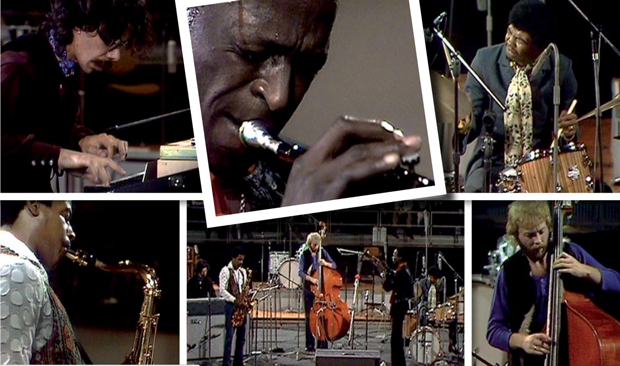
The 25 July set was actually issued in 1993 by Sony Japan as 1969 Miles Festiva De Juan Pins, a hard to obtain import that quickly became deleted and a collector’s item. On their return from Europe, the Lost Quintet travelled to the West Coast to appear at the Monterey Jazz Festival, and once again Downbeat had a reporter on hand: “The group, as a whole, is an intellectual experience from start to non-stop,” observed its writer Harvey Siders. “Miles and his alter ego, Wayne Shorter, are gravitating ever closer to a free nirvana… rendering all conventional frames of reference obsolete. Tempos change and moods shift almost subliminally. The rhythm section follows with uncanny instinct… Miles’ chops are as firm as ever, his ideas cut through with clarity and appreciation of his playing could still approach excitement, even though the familiar yardstick of following the changes had been discarded.”
After playing Philadelphia on 15 August, and just days after the Woodstock rock festival had changed the musical landscape, Davis launched into a series of recording sessions that produced the breakthrough two-LP set that many people believe is the fons et origo (source and origin) of the jazz-rock era, Bitches Brew. But here the Lost Quintet was indeed lost, since the band was augmented by a host of additional musicians, a move seemingly inspired by Jimi Hendrix, who filled his studio with musical extras for extended studio jams on ‘Rainy Day Dream Away’ and ‘Voodoo Chile’ on Electric Ladyland. Whether this approach got the best out of Hendrix’s or Davis’ music is open to question, especially since in Davis’ case we now have superior versions of several numbers that appeared on Bitches Brew, recorded live by the Lost Quintet. But there’s no doubt ‘Voodoo Chile’ was echoed by ‘Miles Runs the Voodoo Down’, both artists appropriating voodoo symbolism, a holdover from West African mystical practices, to make a statement about their black identity.
Whatever the commercial success of Bitches Brew, it remains a turgid, dense rhythmic purée compared to the quicksilver creativity and brilliance of the Lost Quartet, who got the closest to being themselves on the first take of ‘Sanctuary’, which includes an interlude from ‘I Fall in Love Too Easily’, and was spliced onto ‘Take Two’ on the record. This naturally raises the question of why this remarkable band was not recorded in their own right since in sharing the floor with guest players – some of whom had never played with Davis before – their individuality was swamped, whereas live, as Live in Europe 1969 demonstrates, they could be stunning, as Chick Corea emphasises: “The live stuff really should have been gotten on tape because that was when the band was burning.”
One reason might have been the row between Miles Davis and the then new president of Columbia, Clive Davis. This apparently erupted when Clive Davis suggested Miles should play rock venues like the Fillmore, which prompted a telegram from Miles saying he would not record for Columbia again. It was widely reported that he was about to move to Motown Records, but this was a fantasy – Miles’ constant requests for ‘advances’ meant he was financially joined at the hip to Columbia and Clive Davis knew it. No doubt Miles did too, since after recording Bitches Brew he agreed to play the Fillmore. Another reason might have been the large backlog of studio jams Miles had instigated, extracts of which would subsequently be released in later years on compilations like Big Fun and Directions, but at the time may have convinced Columbia executives they had sufficient music in the can without having to go to the extra expense of sending a recording remote to capture the band live.
In October, the quintet was a part of George Wein’s Newport Jazz Festival in Europe tour, opening in Milan on the 26 and playing Rome (27 Oct), Vienna (31 Oct), London (1 and 2 November), Paris (3 Nov), Copenhagen (4 Nov), Stockholm (5 Nov), Berlin (7 Nov), and Rotterdam (9 Nov). Live in Europe 1969 is rounded out by the complete Stockholm concert (on CD3 where Corea’s electric piano fails mid ‘Bitches Brew’ and he switches to acoustic piano for the rest of the concert) and the Berlin concert (on DVD which is of such extraordinary technical and artistic quality that must have been state-of-the-art for 1969), while the Copenhagen concert appeared on Bitches Brew: 40th Anniversary Collector’s Edition in 2010 and as a DVD on Bitches Brew Live.
Of the Berlin date, Frankfurter Neue Press said, “Davis and his saxophonist Wayne Shorter showed a degree of maturity and melodic beauty that can have few parallels in the history of jazz,” while Val Wilmer, reviewing the event for Downbeat said, “I don’t think Miles has rated less than a glowing review anywhere over the past year, but this night he played like a god… Wayne Shorter played his tail off too… [but] without Chick Corea, Dave Holland, Jack DeJohnette and their big ears, Miles would not have the freedom to tread so surely in his new, unrestricted direction.”
Back from Europe, the Lost Quintet rounded out a busy year at the Colonial Tavern in Toronto between 1-6 December. Here, Davis added guitarist Sonny Greenwich to the line-up; clearly he was gazing into the future since the 13 December issue of Rolling Stone magazine carried a feature headlined: “I could put together the greatest rock and roll band you ever heard – Miles Davis.” On 6 and 7 March 1970, Columbia recorded four sets of the Lost Quintet – albeit now a sextet with the addition of percussionist Airto Moreira – at New York’s premier rock venue Fillmore East where he opened for the Steve Miller Blues Band and Neil Young and Crazy Horse. But for whatever reason, the tapes lay in Columbia’s vault until their release in 2001 as Miles Davis: Live at Fillmore East (March 7 1970). Produced by Bob Belden, he observed: “It’s the last gasp of the Parker/Coltrane continuum and the first long look at Miles’ Sly Stone/Jimi Hendrix influenced rock/funk attack in action.”
The Fillmore date was Wayne Shorter’s last gig with the band, leaving the huge promise of the Lost Quintet unfulfilled on recordings of the time and a void where jazz history could have been constructed. After Shorter’s departure, Davis’s music would again be in flux, his performance at the Fillmore saying much about where he now saw his destiny. Taken together, the recorded evidence of Live in Europe 1969 makes it clear that the Lost Quintet was the last truly great Miles Davis ensemble as well as one of the great ensembles of jazz. Yet if jazz history remains set in stone and the Lost Quintet had continued to be lost, this would represent a terrible miscarriage of justice for a band that revealed jazz of the late 1960s at its most luminous.
This article originally appeared in the April 2013 issue of Jazzwise. Subscribe to Jazzwise.
Photos: 1) Bob Cato / Sony Music Archives
2) Screens grabs from Berliner Jazztage 1969. Clockwise from top left: Chick Corea; Miles Davis; Jack DeJohnette; Dave Holland; Miles Davis Quintet; Wayne Shorter: courtesy Columbia Legacy
